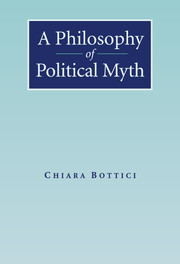9 - Political Myth, Ideology and Utopia
Published online by Cambridge University Press: 24 July 2009
Summary
Following the preceding discussion of the classical theories of political myth, we can now attempt to draw some conclusions as to what a political myth is and how it works. In the first place, all the authors we have been analysing stress the narrative dimension of myth. Cassirer holds that it is a narrative that, by connecting past, present and future events, posits itself as prophetic: the “myth of the twentieth century” is the myth of a superior race, the Aryan one, which, precisely on the basis of the narrative of its glorious origins, is deemed to rule the world. Sorel also points to the narrative dimension of political myth: it is thanks to this dimension that the people involved in major social movements can represent their upcoming action as part of a sequence of events that assures the triumph of their cause. Finally, Spinoza, too, who deals with political myth by using the Jewish prophecy as an exemplar, stresses the narrative dimension that is implicit in the idea of “chosenness”, in the story of the Covenant between God and the Jews that is the foundation of Jewish theocracy. In this case, we have a narrative dimension that encompasses the past, the present and the future: the biblical prophecy looks at the past, since the aim of this prophecy is to recall the terms of the Covenant with God, and, on this basis, it is able to predict the salvation of all the peoples on Earth through the “elected people” of Israel.
- Type
- Chapter
- Information
- A Philosophy of Political Myth , pp. 177 - 200Publisher: Cambridge University PressPrint publication year: 2007

